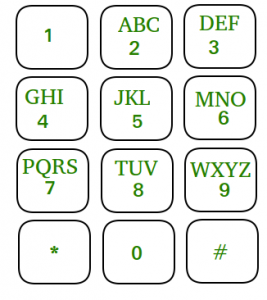

4 digit number combination list code#
Each NPA was assigned a unique three-digit code, typically called NPA code or simply area code. The plan divided most of North America into eighty-six numbering plan areas (NPAs). By the 1940s, the Bell System set out to unify the various numbering plans in existence to provide a unified, systematic approach to route telephone calls across the nation and provide efficient long-distance service that eventually did not require the involvement of switchboard operators.Ī new nationwide numbering plan was officially published in October 1947 in cooperation of the Bell System with the independent telephone operators. The diversity impeded the efficient operation and interconnection of exchanges into a nationwide system for long-distance telephone communication. As a result, the Bell System as a whole developed into an unorganized system of many differing local numbering systems. It was the responsibility of each local administration to design telephone numbering plans that accommodated the local requirements and growth. These systems expanded by growing their subscriber bases, as well as increasing their service areas by implementing additional local exchanges that were interconnected with tie trunks. Īrea code handbook issued by many telephone companies in 1962 to promote the newly introduced direct distance dialingįrom its beginnings in 1876 and throughout the first part of the 20th century, the Bell System grew from essentially local or regional telephone systems. The North American Numbering Plan conforms with ITU Recommendation E.164, which establishes an international numbering framework. For international call routing, the NANP has been assigned the international calling code 1 by the International Telecommunications Union (ITU). The combination of an area code and the telephone number serves as a destination routing address in the public switched telephone network (PSTN). The telephone number consists of a three-digit central office code and a four-digit station number. Each telephone is assigned a seven-digit telephone number unique only within its respective plan area. The NANP divides the territories of its members into numbering plan areas ( NPAs) which are encoded numerically with a three-digit telephone number prefix, commonly called the area code. Canadian numbering decisions are made by the Canadian Numbering Administration Consortium.

Each participating country forms a regulatory authority that has plenary control over local numbering resources. AT&T continued to administer the numbering plan until the breakup of the Bell System, when administration was delegated to the North American Numbering Plan Administrator (NANPA), a service that has been procured from the private sector by the Federal Communications Commission (FCC) in the United States. The NANP was originally devised in the 1940s by AT&T for the Bell System and independent telephone operators in North America to unify the diverse local numbering plans that had been established in the preceding decades. Some North American countries, most notably Mexico, do not participate in the NANP. The North American Numbering Plan ( NANP) is a telephone numbering plan for World Zone 1, which comprises twenty-five distinct regions in twenty countries primarily in North America, including the Caribbean. For other uses, see Nanpa (disambiguation).


 0 kommentar(er)
0 kommentar(er)
